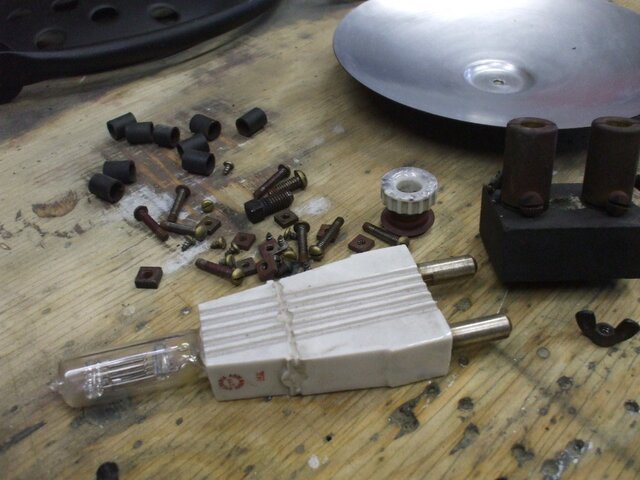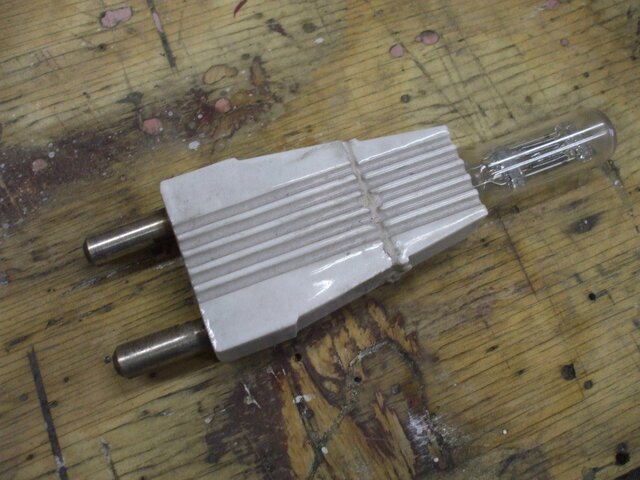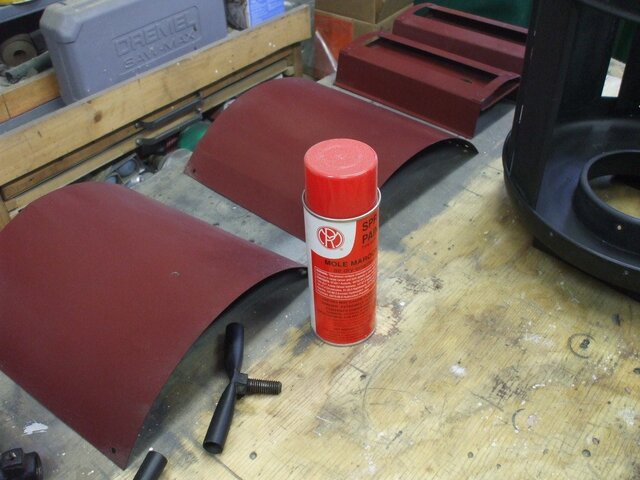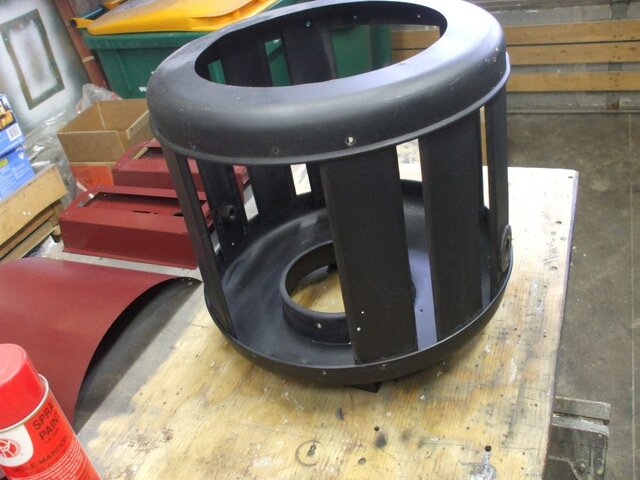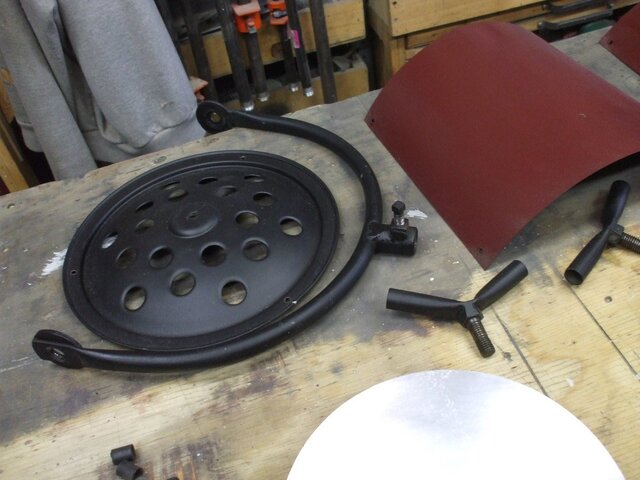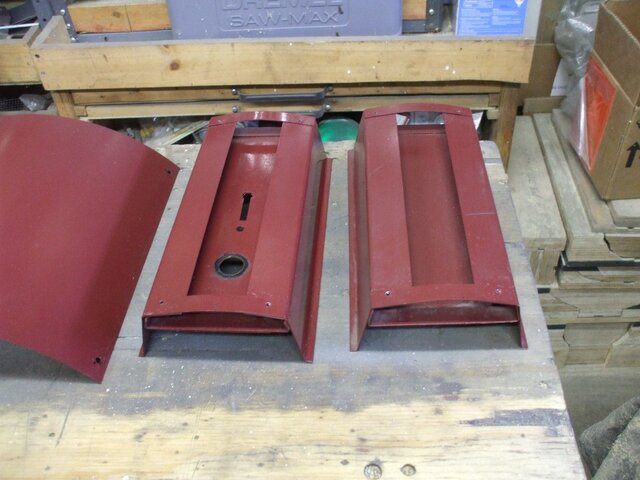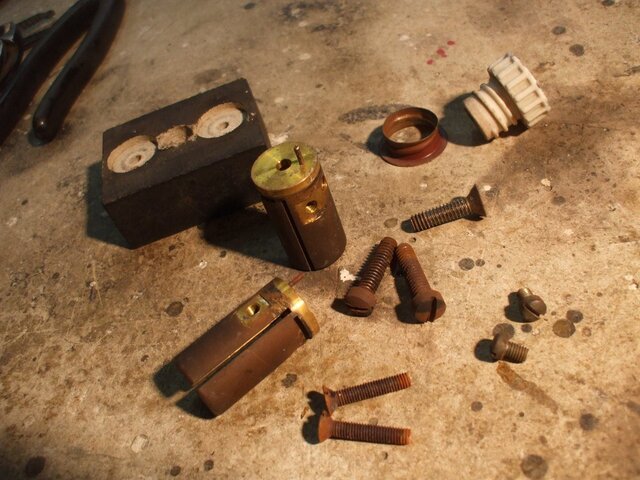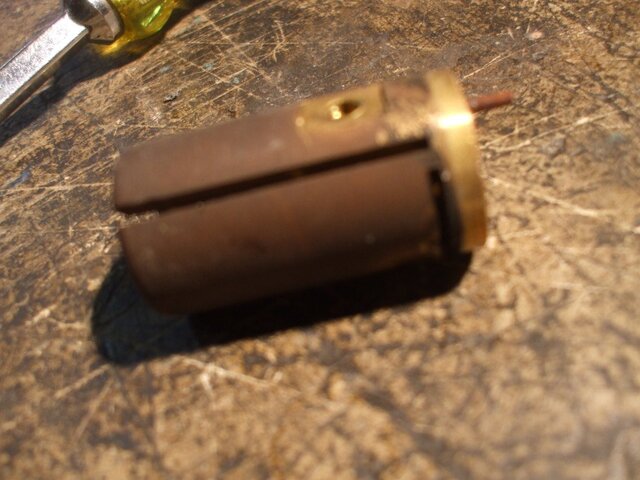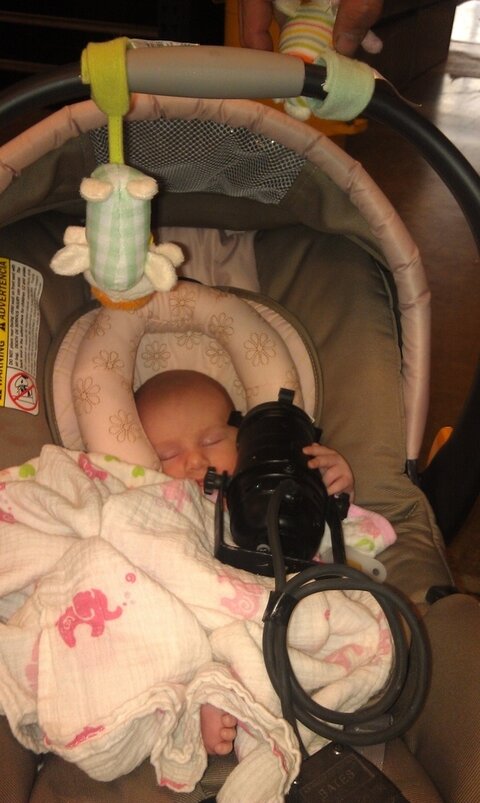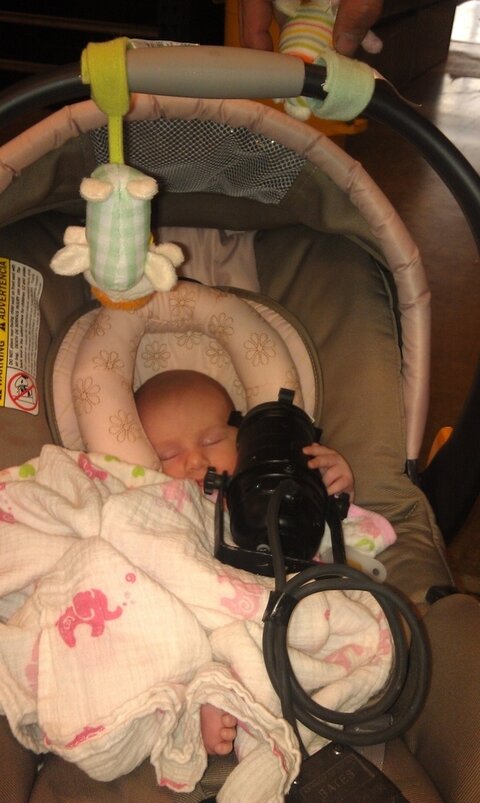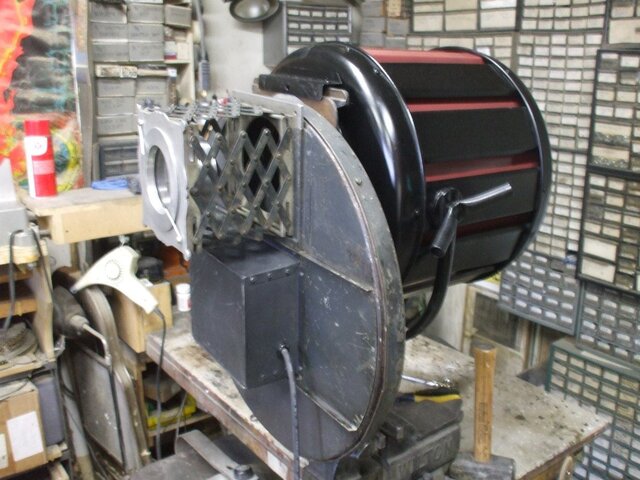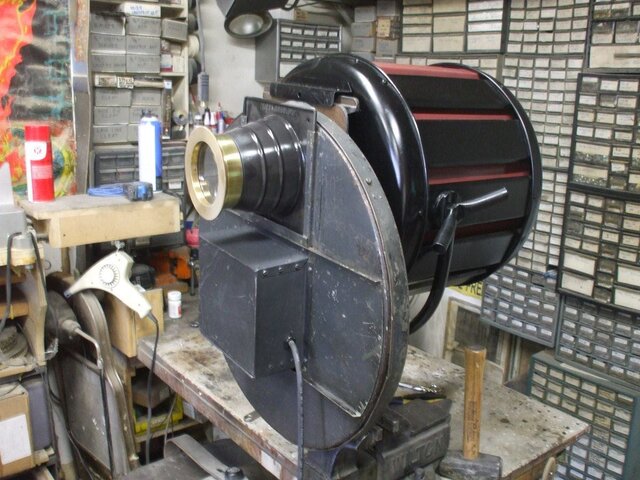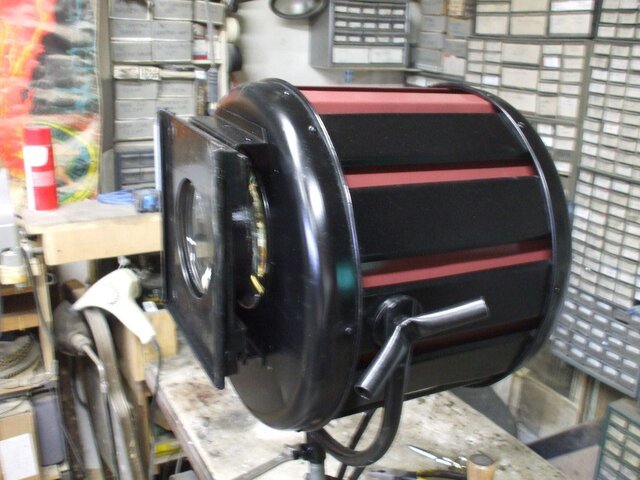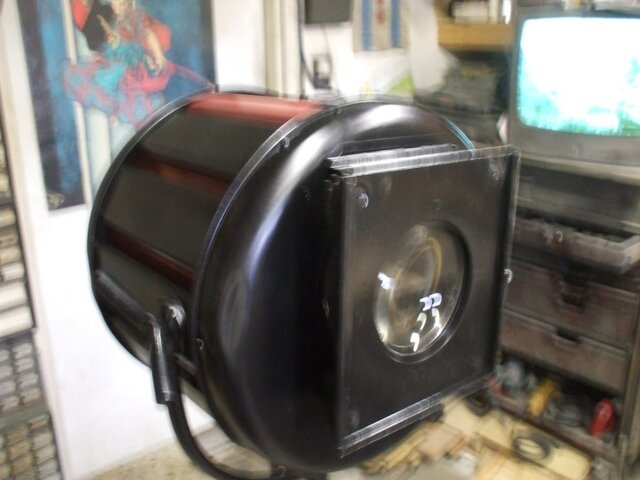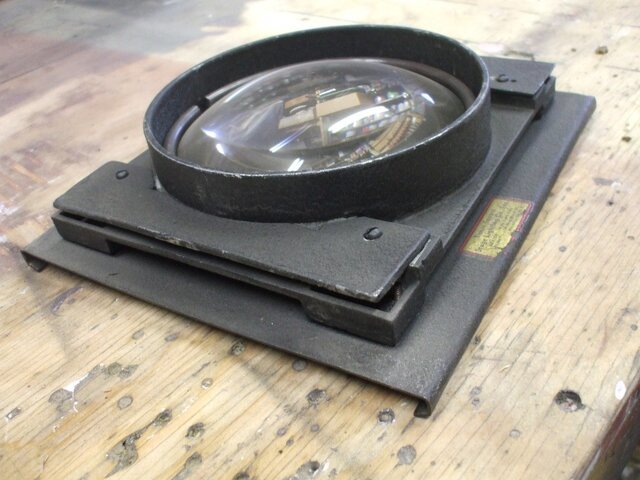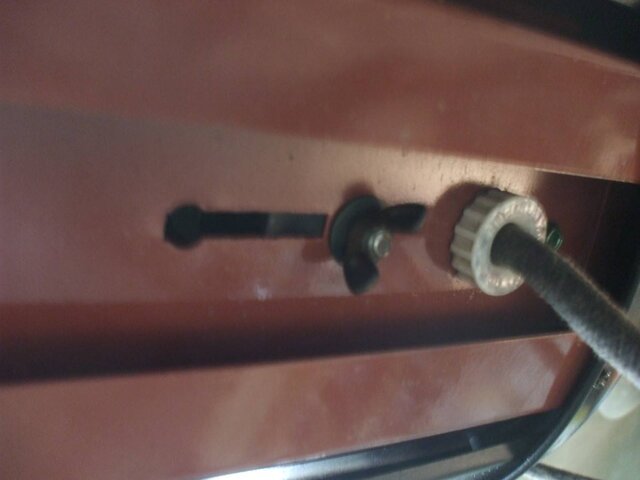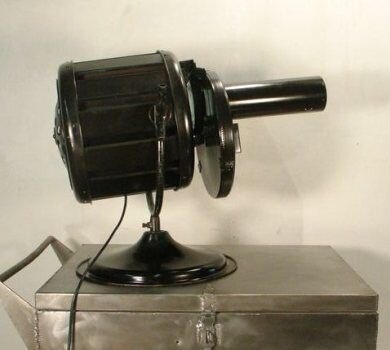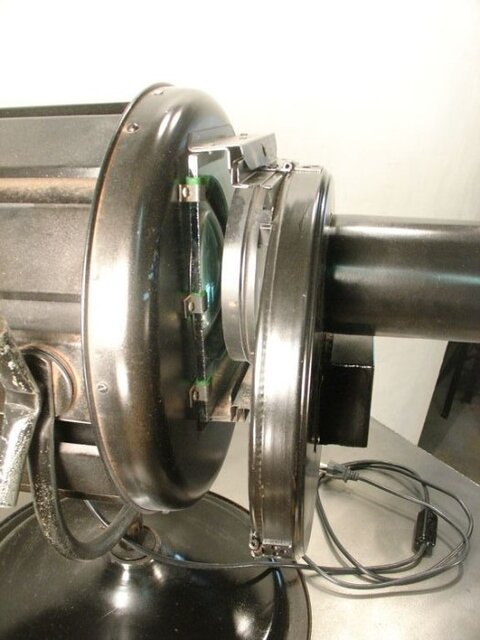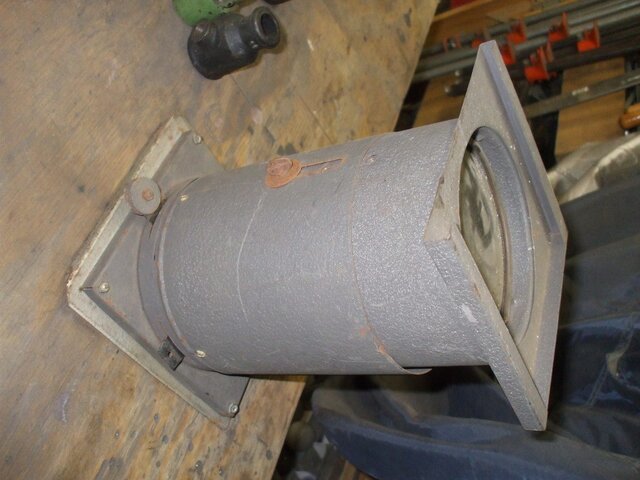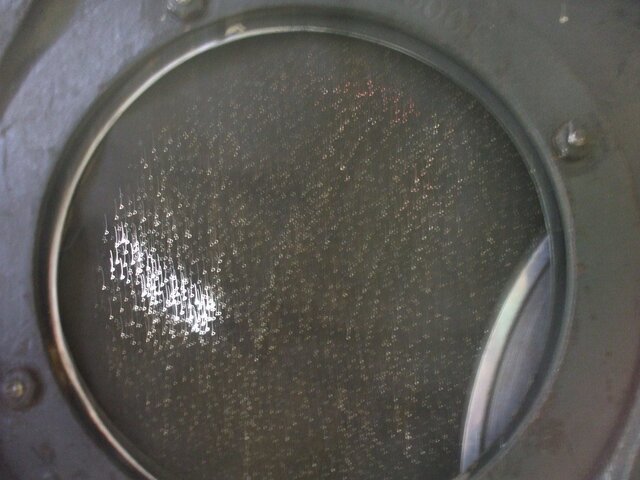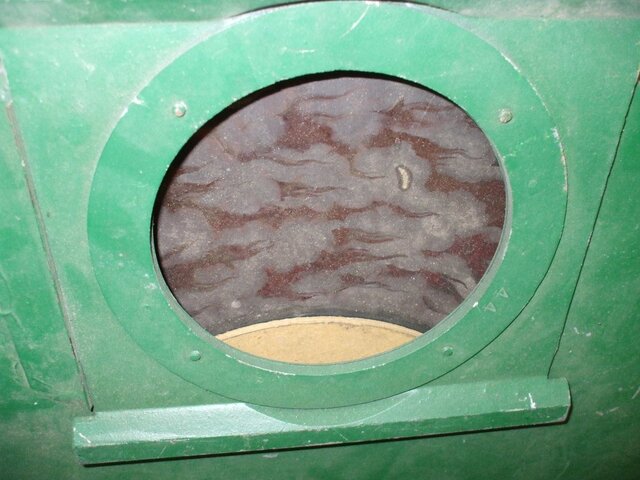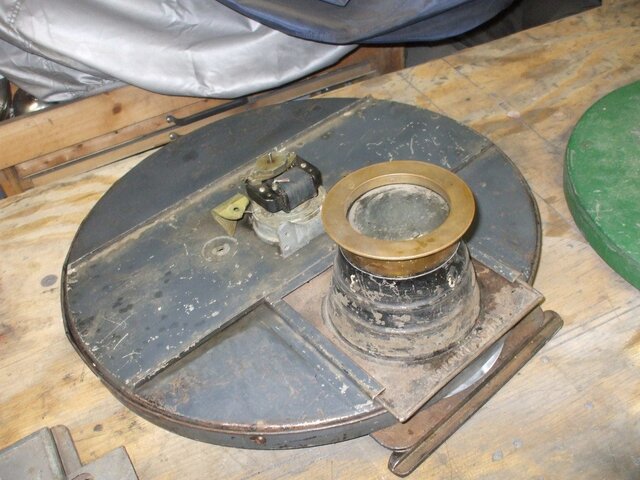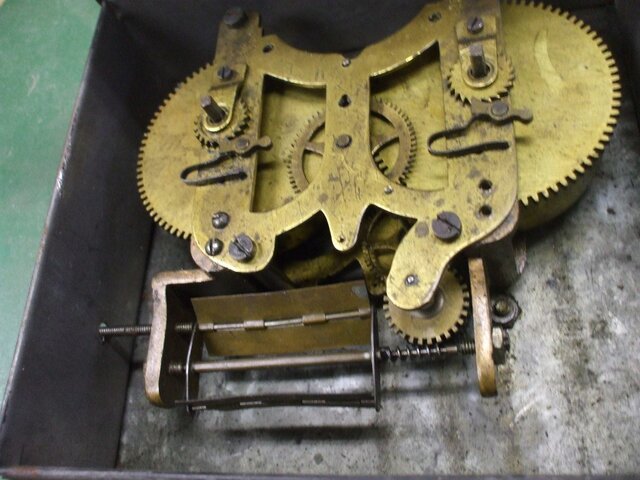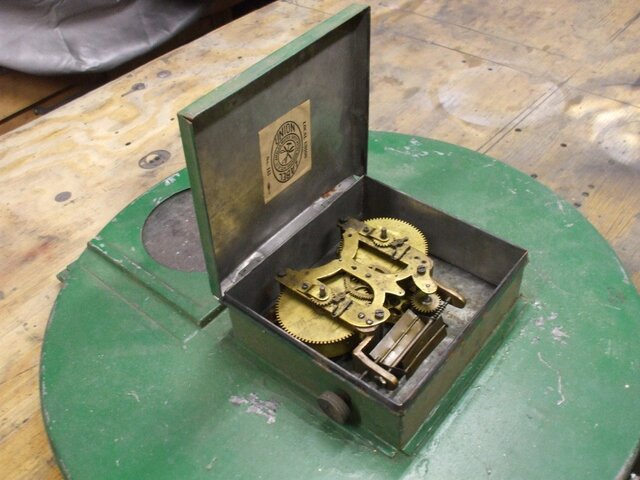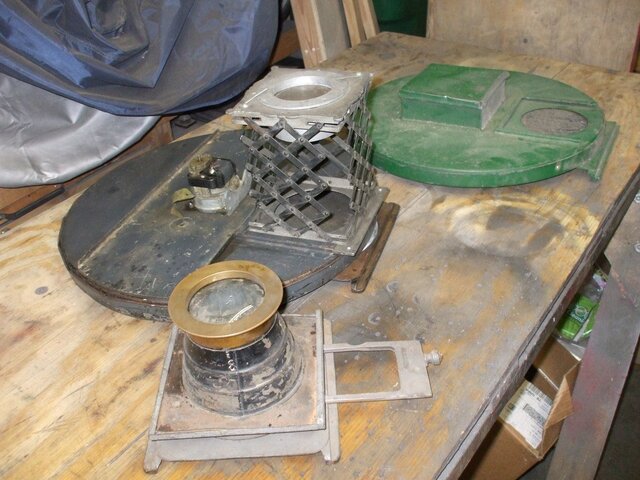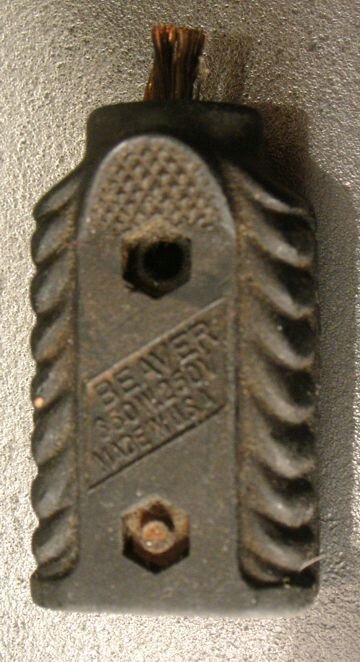Back so soon - no not persay, just confounded by a light I'm working on.
Started working on a PC fixture that’s just like a Mole Richardson classic 5K SolarSpot Fresnel in size and style. Perhaps slightly shorter in depth. Mole Richardson totally denies their making of this fixture which is believed given a lack of any markings or name plate missing holes on it, and while similar in inner paint, outer paint and overall construction, very different.
Did some paint remover and scratch tests and the outer black and inner Mole Maroon colors are not seemingly modified from the photos. Recently the SkyPan from Europe came up to me to make more of (not possible), and the paint is similar fliker.com and I question than about if only Mole Richadson was using that color after the 30's. Would believe this fixture was made domesticly but very old.
Further info on the fixture, it comes from a c.1911 theater - though I think the bent EMT like conduit yoke and knobs are from the 40's at least. Further, of fasteners on the fixture, we are talking 10-24 round head stove bolts with square nuts, hand cut 3/8 NPT like spacers between baffles and 10-32 thread cutting round head screws and #8 Pan Head sheet metal screws. Nothing modern in style but at least for thread cutting screws... something later WWII I think, and in fact the cord is run thru a porcelain and brass bushing which is turn of the century style. F.E. Company which is more like turn of the century than post WWII in style and age. Thinking 1940's in age.
Bi-pin G-38 lamp socket is a solid asbestos block with brass sockets mounted to it for lamp socet and minimalist needs. Not a Mole like lamp socket. No name brand anywhere on the socket. Lamp that came with it was a very old Sylvania CYV halogen upgrade to a tungsten tube lamp style. We are talking really really old halogen upgrade (Mark you have a antique for you coming on next visit.) At best early to mid-1960's for date for this very early lamp.
Designed for a 1 or 2Kw globe or tube type lamp I think, or at most dates to the start of halogen upgrade lamps to such fixtures in the eary 60's. Design problem for the fixture is that it has a steel reflector that is directly on center attached to the rear housing of the fixture and does not focus with the lamp optically. The lamp and lens are both off center to this center. Lamp filiment and lens sit higher to the axis of the light and are off center. This that the reflector doesn't directly optically relate to lamp or lens is very odd in something not seen before.
Could be that this fixture was designed and made to mount a say fire or water scroller effects wheel. Could be also that this off center reflector for a fire wheel would do a better job of doing the rotating wheel than something that is focused. Such an off center reflector than might be explained in if for effects wheel. Don't know and not tested yet but a concept.
After that... no idea in probably from the early 1940's and seemingly two colors.
In the past I have fully researched down to companies like National X-Ray Company so as to figure out lights - but that’s based on at least a marking somewhere. This one has no markings and nobody says they made it so far. Any help?



Started working on a PC fixture that’s just like a Mole Richardson classic 5K SolarSpot Fresnel in size and style. Perhaps slightly shorter in depth. Mole Richardson totally denies their making of this fixture which is believed given a lack of any markings or name plate missing holes on it, and while similar in inner paint, outer paint and overall construction, very different.
Did some paint remover and scratch tests and the outer black and inner Mole Maroon colors are not seemingly modified from the photos. Recently the SkyPan from Europe came up to me to make more of (not possible), and the paint is similar fliker.com and I question than about if only Mole Richadson was using that color after the 30's. Would believe this fixture was made domesticly but very old.
Further info on the fixture, it comes from a c.1911 theater - though I think the bent EMT like conduit yoke and knobs are from the 40's at least. Further, of fasteners on the fixture, we are talking 10-24 round head stove bolts with square nuts, hand cut 3/8 NPT like spacers between baffles and 10-32 thread cutting round head screws and #8 Pan Head sheet metal screws. Nothing modern in style but at least for thread cutting screws... something later WWII I think, and in fact the cord is run thru a porcelain and brass bushing which is turn of the century style. F.E. Company which is more like turn of the century than post WWII in style and age. Thinking 1940's in age.
Bi-pin G-38 lamp socket is a solid asbestos block with brass sockets mounted to it for lamp socet and minimalist needs. Not a Mole like lamp socket. No name brand anywhere on the socket. Lamp that came with it was a very old Sylvania CYV halogen upgrade to a tungsten tube lamp style. We are talking really really old halogen upgrade (Mark you have a antique for you coming on next visit.) At best early to mid-1960's for date for this very early lamp.
Designed for a 1 or 2Kw globe or tube type lamp I think, or at most dates to the start of halogen upgrade lamps to such fixtures in the eary 60's. Design problem for the fixture is that it has a steel reflector that is directly on center attached to the rear housing of the fixture and does not focus with the lamp optically. The lamp and lens are both off center to this center. Lamp filiment and lens sit higher to the axis of the light and are off center. This that the reflector doesn't directly optically relate to lamp or lens is very odd in something not seen before.
Could be that this fixture was designed and made to mount a say fire or water scroller effects wheel. Could be also that this off center reflector for a fire wheel would do a better job of doing the rotating wheel than something that is focused. Such an off center reflector than might be explained in if for effects wheel. Don't know and not tested yet but a concept.
After that... no idea in probably from the early 1940's and seemingly two colors.
In the past I have fully researched down to companies like National X-Ray Company so as to figure out lights - but that’s based on at least a marking somewhere. This one has no markings and nobody says they made it so far. Any help?
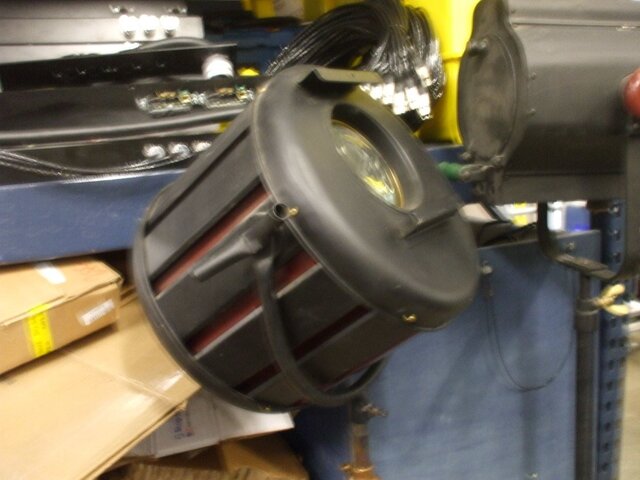
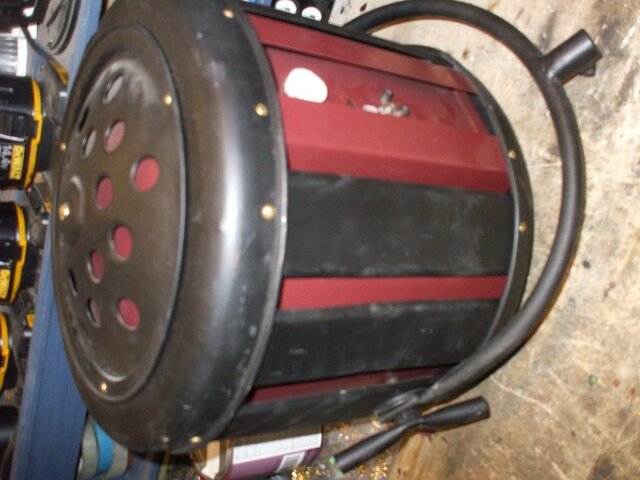
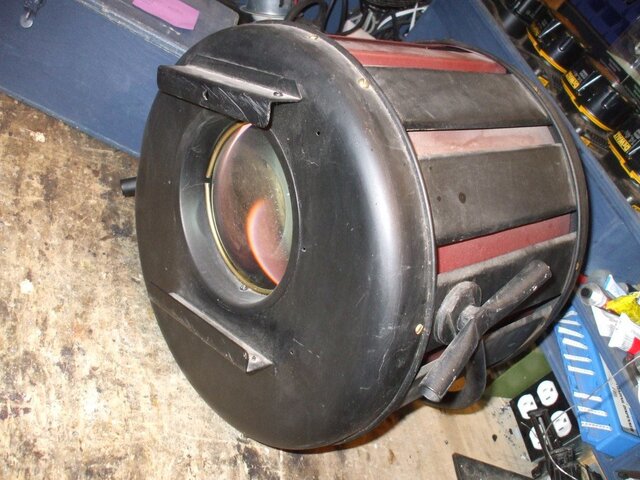
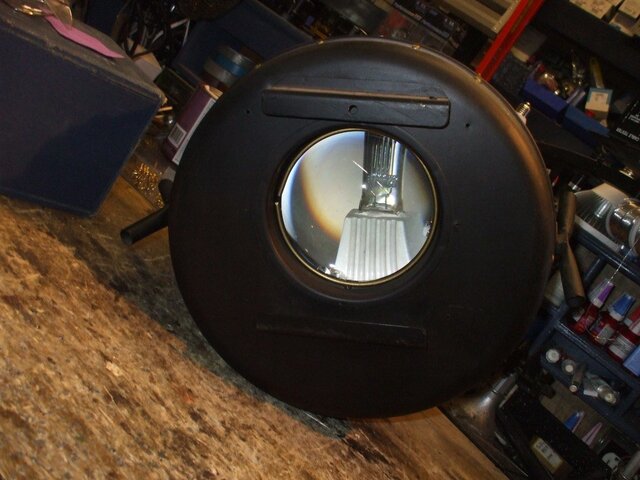
Last edited:



